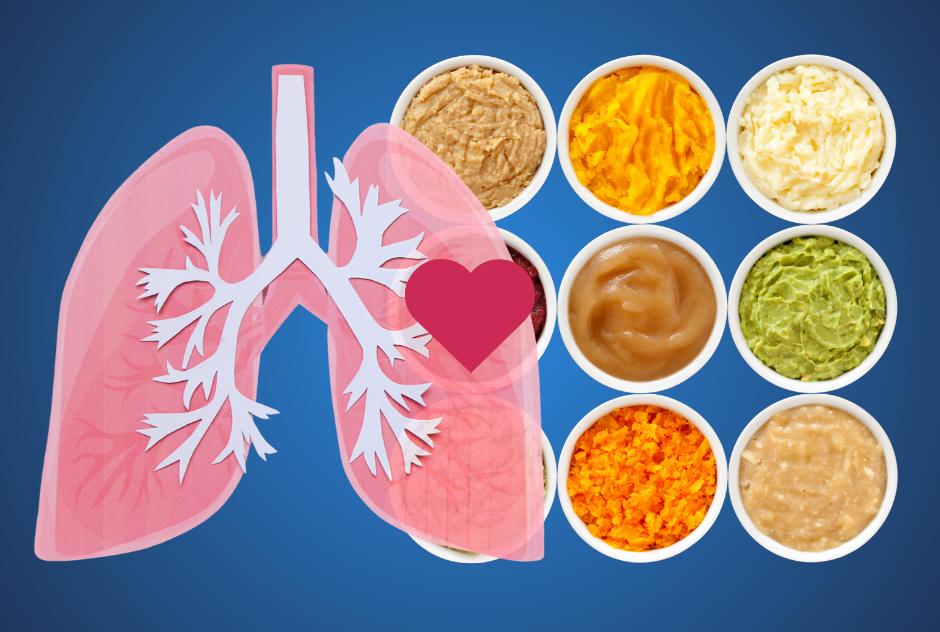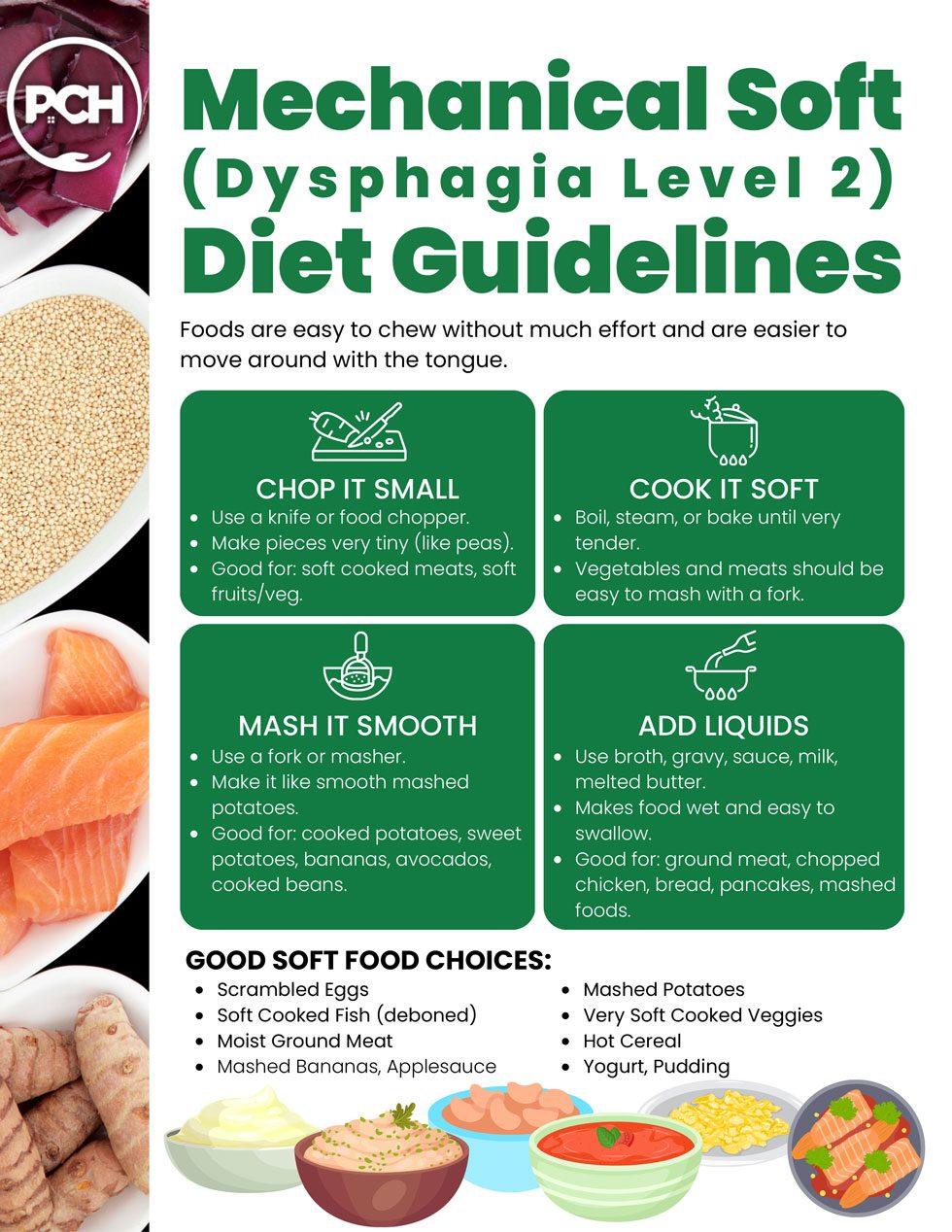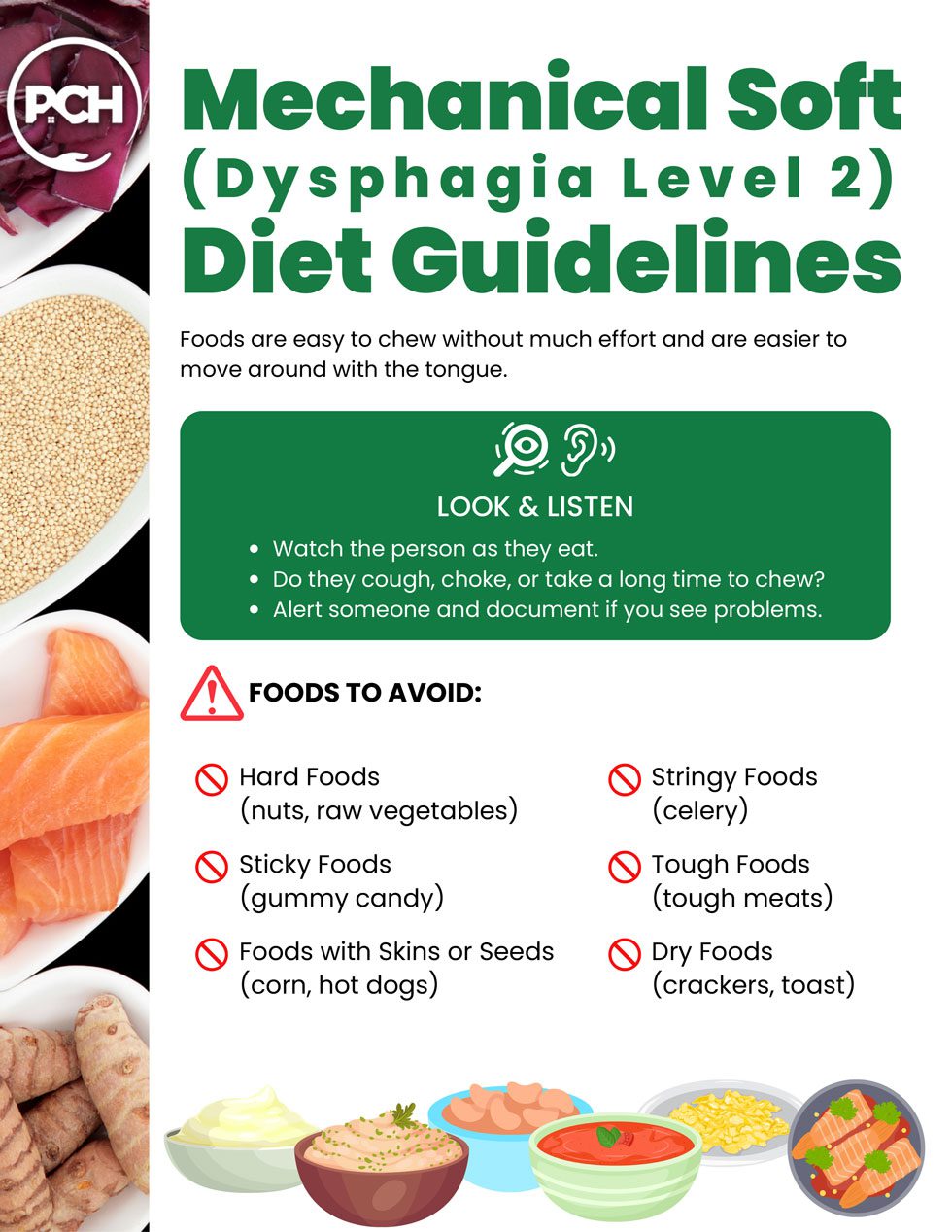Preventing Mealtime Risks: Using Mechanical Soft Diets to Reduce Aspiration
Making mealtimes safer is one of the most important things a caregiver can do. For residents with swallowing difficulties, a mechanical soft diet can prevent choking and reduce the risk of serious lung infections like aspiration pneumonia. Learn the key techniques for meal preparation and download our free, printable poster to use as a daily guide in your facility.

Mealtimes are a cornerstone of daily life in any care facility—a time for nourishment, comfort, and social connection. As a caregiver, ensuring that every meal is both enjoyable and safe is one of your most important responsibilities. When residents have swallowing difficulties, the wrong food texture can cause serious health problems.
For many older adults, especially those with conditions like a past stroke, dementia, or Parkinson's disease, swallowing can become a challenge. This difficulty, known as dysphagia (difficulty swallowing), means that certain food textures can pose a risk. Dysphagia is one of the most common swallow difficulty causes and may lead to aspiration causing pneumonia if not carefully managed. That’s why modified diets are a critical part of a resident's care plan.
We’ve discussed Specialized Diets for Senior Care, including pureed diets for those with significant swallowing difficulties. Now, let’s focus on another diet option: the mechanical soft diet.
What is a Mechanical Soft Diet?
A mechanical soft food diet consists of foods that are tender, moist, and easy to chew and swallow. The food is "mechanically" altered—by chopping, mashing, or cooking it until soft—to reduce the effort needed to eat safely. It’s an ideal choice for residents who can still chew but may struggle with tougher or harder foods. This type of diet can include a variety of soft diet foods and soft diet food ideas tailored to each resident.
To help your staff understand and prepare these meals correctly, we've created a simple, printable poster. It’s part of our "Cabinet Door Initiative," which provides handy guides that can be placed where staff can quickly and easily reference them.
This poster is a great visual tool to hang in your kitchen or staff room. It covers the four key preparation techniques: chopping food into tiny, pea-sized pieces; cooking meats and vegetables until they are very tender; mashing foods to a smooth consistency; and adding liquids like broth or sauce to keep food moist and easy to swallow.


You can download the free, printable English poster, Spanish poster, and other Cabinet Door posters at PCALIC Resource Portal.
Why Diet Texture is a Key to Safety
Following a resident's prescribed diet is about more than just comfort—it's a crucial safety measure. When a resident has trouble swallowing, there is a risk that food or liquid can "go down the wrong pipe" and enter the lungs instead of the stomach. This is called aspiration.
When food, drink, or saliva is aspirated, it can carry bacteria into the lungs and lead to a serious infection called aspiration pneumonia. Families often ask, what is aspiration pneumonia and is pneumonia contagious? While aspiration pneumonia itself is not contagious in the way viral pneumonia can be, it requires prompt medical attention and often antibiotics as part of the care plan. In many cases, aspiration pneumonia antibiotics are prescribed alongside supportive measures.
Providing food with the correct texture is one of the most effective ways caregivers can help prevent this from happening. By reducing the risk of aspiration, you also reduce the likelihood of residents needing pneumonia treatments or hospitalization for a pneumonia treatment plan.
A Checklist for Safe Mealtimes
Beyond preparing the food correctly, how you serve the meal is just as important. Our short animated guide provides a great overview of the key steps to prevent choking.
Here are a few simple but critical rules to expand on those principles for every mealtime:
- Positioning is Key: Residents must be sitting fully upright in a chair or at a 90-degree angle in bed during meals. They should remain upright for at least 30 minutes after eating to help prevent aspiration.
- Create a Calm Environment: Minimize distractions like a loud television. A quiet space helps residents concentrate on the task of eating and swallowing safely.
- Pace the Meal: Encourage small bites and give residents plenty of time to chew thoroughly and swallow before offering more. Mealtimes should never feel rushed.
- Look and Listen: Pay close attention to residents during meals. Watch for signs of trouble, such as coughing, frequent throat clearing, choking, or taking a very long time to chew. If you notice any issues, document them and alert the appropriate supervisor or healthcare provider. These could be early signs of difficulty swallowing food and potential pneumonia symptoms that require attention.
By focusing on both proper food preparation and safe mealtime habits, you can create a dining experience that is not only pleasant but also fundamentally safe, protecting your residents from preventable harm.